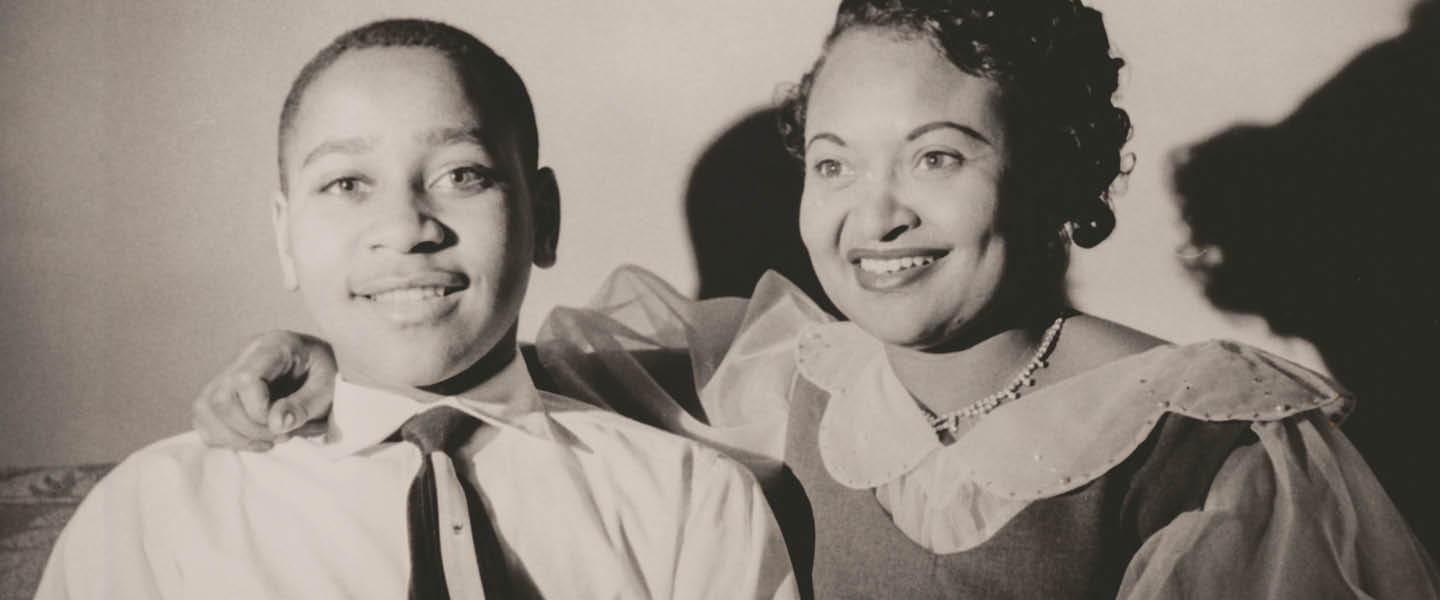One late August evening in 1955, a 14-year-old boy named Emmett Till walked into a small store in Money, Mississippi, to buy some bubble gum.
Emmett was a Black kid from Chicago who was visiting relatives in Mississippi. Carolyn Bryant—a 21-year-old White woman who ran the store along with her husband, Roy—was working alone inside.
Emmett was in the store alone with Bryant for about one minute. After he stepped outside, Emmett whistled back at her.
Four days later, Roy Bryant and his half brother, J.W. Milam, kidnapped Emmett from his cousins’ house in the middle of the night. They drove him to a barn about 30 miles away, where they savagely beat him, shot him in the head, and threw his body into the Tallahatchie River.
A teenager fishing in the river found Emmett’s body three days later. At the murder trial that took place the following month, witnesses clearly identified Bryant and Milam as the perpetrators, but an all-White jury in a deeply segregated South acquitted them. They walked free, though they would soon confess to the killings in a magazine article.
Seventy years later, Emmett Till’s murder remains a watershed moment in U.S. race relations. Coverage of the killing and its aftermath helped galvanize the civil rights movement.
“This murder represents with unusual clarity the brutality of racism in this country,” says Dave Tell, a professor at the University of Kansas who has studied the case extensively. “On the one side, you have an innocent kid lynched for whistling at a White woman. On the other side, you have these confessed murderers who brag about committing the crime and are never held to account.”
One August evening in 1955, a 14-year-old boy named Emmett Till walked into a small store in Money, Mississippi. He wanted to buy some bubble gum.
Emmett was a Black kid from Chicago who was visiting relatives in Mississippi. Carolyn Bryant was working alone inside. She was a 21-year-old White woman who ran the store along with her husband, Roy.
Emmett was in the store alone with Bryant for about one minute. When he went outside, Emmett whistled back at her.
Four days later, Roy Bryant and his half brother, J.W. Milam, kidnapped Emmett from his cousins’ house in the middle of the night. They drove him to a barn about 30 miles away. They beat him, shot him in the head, and threw his body into the Tallahatchie River.
Emmett’s body was found three days later by a teenager fishing in the river. A murder trial took place the following month. Witnesses clearly identified Bryant and Milam as responsible, but an all-White jury in a deeply segregated South acquitted them. They walked free. Soon after the trial, they would confess to the killings in a magazine article.
Seventy years later, Emmett Till’s murder remains a turning point in U.S. race relations. Coverage of the killing and its aftermath strengthened the civil rights movement.
“This murder represents with unusual clarity the brutality of racism in this country,” says Dave Tell, a professor at the University of Kansas who has studied the case extensively. “On the one side, you have an innocent kid lynched for whistling at a White woman. On the other side, you have these confessed murderers who brag about committing the crime and are never held to account.”

